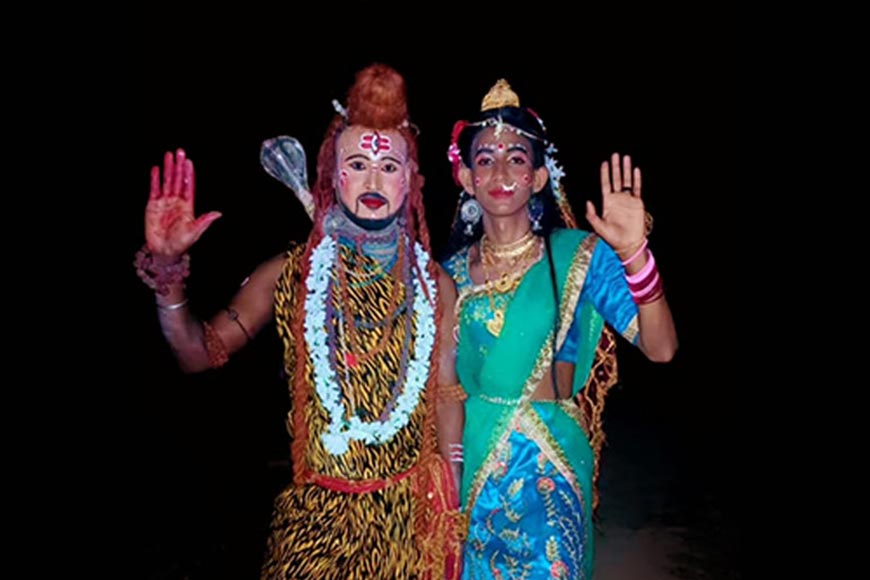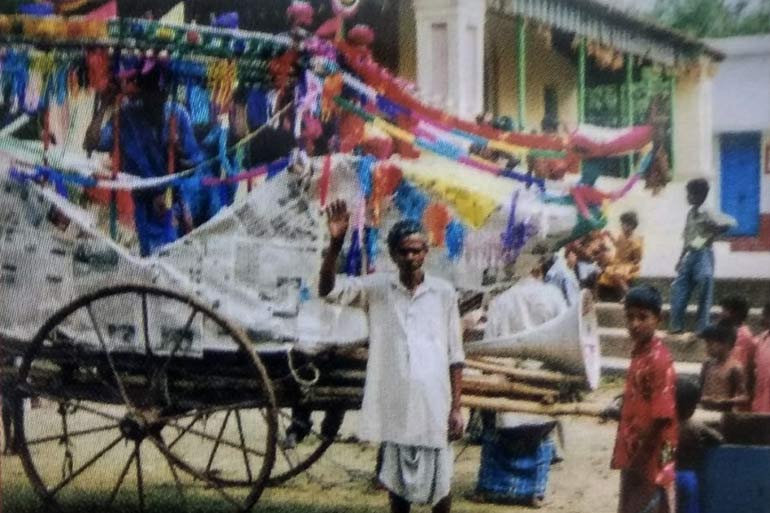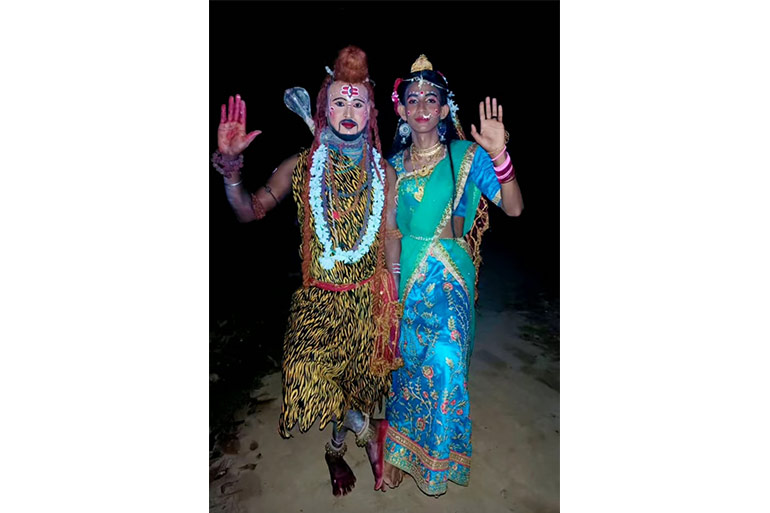"Mayurpankhi and Shib-Gauri Pala: Two vanishing folk theatres of Bardhaman – GetBengal story

Many things are deeply associated with Purba Bardhaman district, and among them, the folk theatre tradition is undeniably renowned and popular. Folk theatre was once very popular all over Bardhaman, but it has dramatically declined in recent years. In this near-extinct condition, two forms of folk theatre are still found in two areas—Mayurpankhi and Shib-Gauri Pala.
Mayurpankhi
The Mayurpankhi song tradition was once popular in many areas of Purba Bardhaman. Today, it is still practiced in Nadugram under Raina police station during the worship of Nareshwar Shiva. This song tradition is 200–250 years old. In villages like Jamalpur and Raina, Mayurpankhi song contests are held between two neighbourhood groups.
What is Mayurpankhi?
We know that the Rarh region developed around the Damodar River. In such riverine areas, boats play an essential role. Boats are deeply intertwined with the local culture. In this folk theatre form, a symbolic Mayurpankhi boat is created using a bullock cart, with a frame built from bamboo and decorated with colourful paper. From the front and back, it looks like a peacock. Musicians sit in the middle of the cart. Earlier, traditional instruments like dhol (drum) and kansi (brass cymbals) were used, but now khol (double-headed drum), harmonium, and bamboo flute are more common. The song begins with a continuous chant, “Arey oi…”, followed by cries of “Jai Shri Nitai Premananda Haribol” and the sound of the khol. Then begins the competition between the two teams.
The performers wear saffron panjabi (kurta) and white pajama. Most of them are agricultural labourers or toto (e-rickshaw) drivers by profession. One team plays the role of Krishna, while the other plays Radha. Through dialogues between Radha and Krishna, the dramatic content unfolds.

Shib-Gauri Pala
In central Bardhaman—areas like Boro Nilpur, Kanchannagar, and many refugee colonies—an ancient folk theatre once thrived, known as Shib-Gauri Pala. Today, its remnants are preserved by a single family of Malakars in Nilpur, who have been devotedly involved in this form for about 40 years. They even perform it at home during the Nil Puja. The remuneration they receive from these performances is so meagre that it cannot provide even a single meal for their families. Yet, they say they are content serving at Lord Shiva’s feet.
The Shib-Gauri Pala is performed throughout the Bengali month of Chaitra, the last month of the year. The main purpose is the worship of Lord Shiva. In the courtyard or open space, a long bel (wood-apple) tree trunk smeared with vermillion is installed, carved with figures of Nag-Nagini and Shib-Gauri. The dance begins around this symbolic structure. Through dialogues and acting, the story of Shiva and Parvati’s humble household is depicted.
The subject matter is simple. Shiva is portrayed as an easy going wanderer, and his family lives in poverty. Therefore, religious themes take a backseat. Instead, the songs highlight sorrow, the search for happiness, and love between husband and wife. The earthy tone of Bengal is captured in the melodies. Gauri is shown sorting rice and lentils while Shiva says to her, "Shib bole, 'O Gauri, tumi to boro-i shundori / Ami ektu hoyechhi buro, taate tomar khoti ki?'" (“Shiv says—O Gauri, you are so beautiful / I may be a little old, but does that harm you?”) This leads to their playful quarrels, love, and affection, expressed in songs like—"Shib cholilo biyer beshe / Narod bajay beena / Shob sokhira saijya elo boron kulo niye". “Shiv went in bridal attire / Narad played the veena / All the friends dressed up, came with traditional trays.”
The costumes are simple, "Shib cholilo biyer beshe / Narod bajay beena / Shob sokhira saijya elo boron kulo niye" cheap wigs and beards, tattered colourful clothes. Weapons include a dugdugi (drum), broken tin trident, sword, and flute. Currently, Shambhu Babu of Shantipara performs this play. His family members play the roles—Ranjit Malakar (Shiva), Prashanta Malakar (Gauri), Sanjit Malakar (Kali), and Sushanta Malakar (Radha). Gopal Malakar accompanies them with flute, dhak, and dhol. At the end of the performance, they go to the river with the wooden trunk, bathe it, bring it home, and pour water on it. Devotees offer their prayers and make vows with deep faith.
This form of folk theatre was primarily performed by antyaj, namasudra, or other Scheduled Caste/Tribe communities. It was particularly common in refugee colonies settled by people from East Bengal. Today, it survives only in Shantipara of Boro Nilpur. Once a grand affair, the play used to be performed even at midnight, and people would joyfully watch it, wiping sleep from their eyes. But now, this art form is on the verge of extinction.

The lives of the performers are also full of hardship. Some sell peanuts, some are hawkers, others work as masons. On one hand, they are burdened by poverty; on the other, the current social scenario prevents them from focusing on art and entertainment. They are too busy trying to earn their daily meal.
The decline of this theatrical tradition can largely be attributed to globalisation. Nowadays, everyone is engrossed in mobile phones, which have taken over people's thinking and imagination. With entertainment available at the touch of a button, people are no longer inclined to leave their homes to watch live plays. This has endangered the livelihoods of the performers, and they too have lost interest in pursuing such art forms. However, if efforts are made to modernise the presentation while preserving the core essence and spirit of the art, there may still be hope for revival.
Note : Translated by Debamita Ghosh Sarkar
To read the original Bengali article, please click here :











